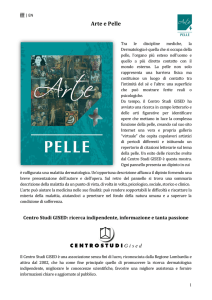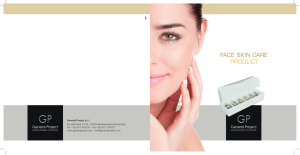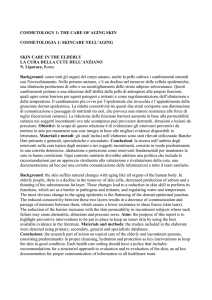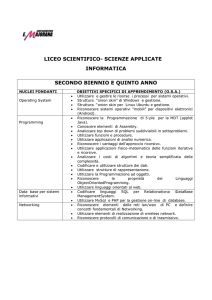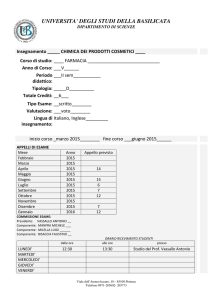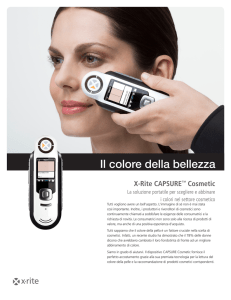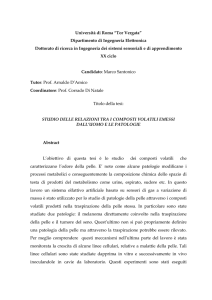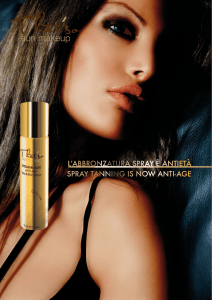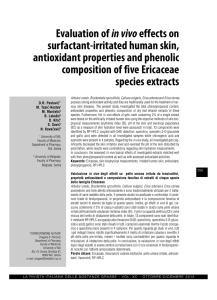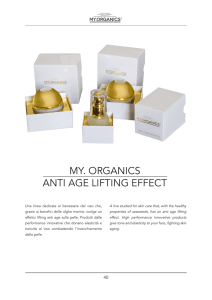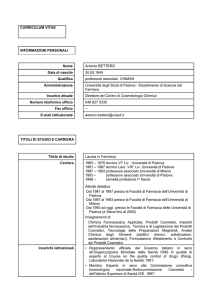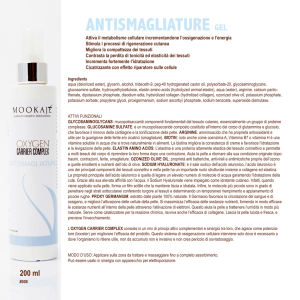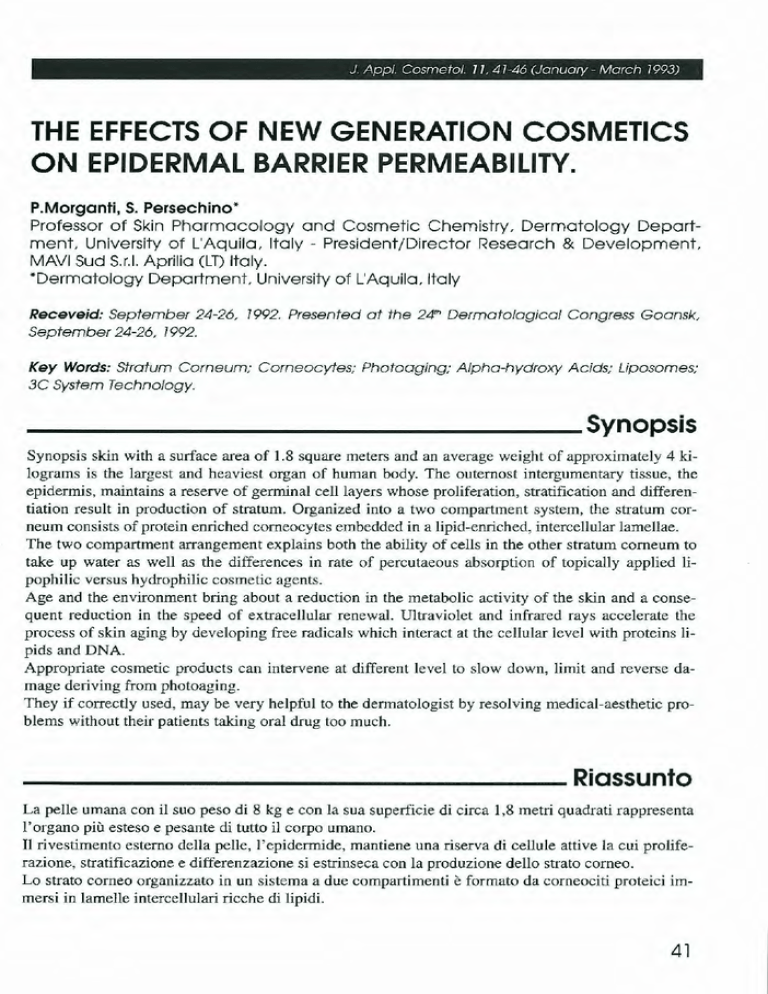
J. Appl Cosmetol. 11. 4 7-46 (January - March 1993)
THE EFFECTS OF NEW GENERATION COSMETICS
ON EPIDERMAL BARRIER PERMEABILITY.
P.Morganti, S. Persechino*
Professor of Skin Pharmacology and Cosmetic Chemistry, Dermatology Department, University of L'Aquila , ltaly - President/Director Research & Development,
MAVI Sud S.r.l. Aprilia (LT) ltaly.
*Dermatology Department, University of L'Aquila, ltaly
Receveid: September 24-26, 1992. Presented at the 241h Dermatologica/ Congress Goansk,
September 24-26, 1992.
Key Words: Stratum Corneum: Corneocytes: Photoaging: Alpha-hydroxy Acids: Uposomes:
3C System Technology.
_________________ Synopsis
Synopsis skin with a surtace area of l .8 square meters and an average weight of approximately 4 kilograms is the Iargest and heaviest organ of human body. The outernost intergumentary tissue, the
epidermis, maintains a reserve of germinai celi layers whose proliferation, stratification and differentiation result in production of stratum. Organized into a two compartment system, the stratum corneum consists of protein enriched corneocytes embedded in a Iipid-enriched, intercellular Iamellae.
The two compartment arrangement explains both the ability of cells in the other stratum corneum to
tak:e up water as well as the differences in rate of percutaeous absorption of topically applied Iipophilic versus hydrophilic cosmetic agents.
Age and the environment bring about a reduction in the metabolic activity of the skin and a consequent reduction in the speed of extracellular renewal. Ultraviolet and infrared rays accelerate the
process of skin aging by developing free radicals which internet at the cellular leve! with proteins Iipids and DNA.
Appropriate cosmetic products can intervene at different leve! to slow down, Iimit and reverse damage deriving from photoaging.
They if correctly used, may be very helpful to the dermatologist by resolving medical-aesthetic problems without their patients taking ora! drug too much.
-----------------Riassunto
La pelle umana con il suo peso di 8 kg e con la sua superficie di circa 1,8 metri quadrati rappresenta
l'organo più esteso e pesante di tutto il corpo umano.
II rivestimento esterno della pelle, l'epidermide, mantiene una riserva di cellule attive la cui proliferazione, stratificazione e differenzazione si estrinseca con la produzione dello strato corneo.
Lo strato corneo organizzato in un sistema a due compartimenti è formato da corneociti proteici immersi in lamelle intercellulari ricche di lipidi.
41
The effects of new generation cosmet1cs on epidermal barrier permeab1/ity
.
L'organizzazione in due compartimenti spiega l'abilità esercitata dalle cellule dello strato corneo di
assorbire o di respingere sia i composti idro che liposolubuili.
L' età e l'ambiente provocano un rallentamento dell 'attività metabolica della pelle e quindi del suo
continuo rinnovarsi. I raggi ultravioletti ed infrarossi accelerano il processo dell' invecchiamento cutaneo mediante la formazione dei radicali liberi che interreagiscono con le proteine ed i lipidi del
DNA danneggiandoli. L' uso corretto dei cosmetici può spesso ridurre o evitare questi danni aiutando il dermatologo a risolvere molti problemi estetici dei suoi pazienti, evitando l' uso dei farmaci.
42
PMorgant1. S Persechmo
The stratum corneum: a two
compartment system.
Organized into a two compartment system, the
stratum corneum co nsists of protein enriched
corneocytes embedded in a lipid-enriched intercellular medium. Some enzyme acti vity also
takes piace in this layer. The two compartment
arrangement explains both the ability of cells in
the outer stratum corneum to take up water as
well as the differences in rate of percutaneous
absorption of topically applied li pophilic versus
hydrophilic cosmetic agents.
Blank's, observations provided the basis for most
products now generally known as moisturizers,
the principal ingredient of which is water. Other
ingredients include substances which is attract,
retain or bind water within the stratum corneum.
Another category of cosmetic compounds known
to influence the qualitative character of the stratum corneum are the alpha-hydroxy acids. A
number of these occur naturally in food.
The alpha-hydroxy acids
Whereas moisturizers affect th e stratum corneum already formed, alpha-hydroxy acids determine the quality of the stratum corneum at its
formati on, promoting normai cohesion among
the newly formed cells.
For absorption of most compounds, the stratum
corneum acts as the rate-controlling membrane.
For lipophilic, water-insoluble compounds, diffusion through the epidermis constitutes the limiting step. For cosmetic pu rposes, tota! percutaneous absorption is typically undesiderable,
with a sustained locai effect at or near the surface of the skin being preferable. Many products
require minimal absorption. Absorption followed by long-term accumulation is also undesiderable for frequently used products.
Biopolymers and liposomes
Common cosmetic ingredients have always in-
cluded biopolymers extracted from plant and
animai materi als for emollient and protectiv e
treatments.
However, these macromolecules work only to
protect skin on the surface and are too large to
be absorbed through the ski n. New delivery systems are enhancing uptake of these molecules
and thereby sig nificantly contributing to the
overall effecti veness of cosmetic products. In
addition, the quality of today's natural materials
is mu ch improved due to more sophi sti cated
harvesting, purification, processing, and quality
contro! methods.
Most recently, tru e cosmeceutical ingredients
have been developed. They include: li posomes
and niosomes (non -ionie versicles) that can deli ver antioxidan ts; free radical scavengers, and
other active ingredients to the dermis; cell extracts and celi energ izing complexes that purportedly speed up the rate of epidermal cell renewal; and celi recovery nutrients that enhance
the rate o DNA repair followi ng sun exposure.
Photoaging and free
radicals
Significant differences exist between phQtoagi ng and the natural aging process. Photoburning enhances and accelerates these effects and
promotes DNA damage.
Photoaging results from an uncontrolled level of
lipid peroxidation caused by the generation of
free radicals when UV photons hit the molecular components of skin. These highly reactive
free radicals induce degenerati on of the skin 's
key components. To counteract their destructive
effects, skin cells possess enzymatic and no nenzymatic free radical scavengers that control
the activity and leve! of free radicals.
Free radical damage worsens with age, due to
increases in free radical production and declines in the ability of the antioxidant system to
reduce levels of peroxidation'. Appropriate cosmetic products can intervene at different levels
to slow down, limit, and reverse damage deri-
43
The effects of new generation cosmetics on epidermal barrier permeability
References
1.
2.
3.
4.
5.
6.
7.
8.
9.
10.
11.
12.
46
Bucher G. (1991) The Cosmetic and Toiletries Industry. Cosmet.Toil.Manuf., 1991 /92 (Century
Press).
Brand H.M., Robi E.G. (1991) The Concept of Emollient in Cosmetics Proceedings. Ziolkosky KG Edit., Augsburg.
Counts DF., Skpeko F., Mc Bee J. and Wich AG. (1988) The effect of retinyl palrnitate on
skin composition and morphometry. J.Soc.Cosmet.Chim. 39, 235.
Levrat B., (1991) Permeabilite des Membranes cellulaires et radicaux libres in Cosmetic proceedings, Ziolkosky KG Ed., Augsburg.
Kagan V. (1988) Lipid peroxidation in biomembranes. CRC press.
Balin AK. and Kligman AM. (1988) Aging and the skin. Raven press, N. Y.
Mukatar H. (1991) Pharmacology ofthe skin. CRC press, London.
Morganti P., Montagna W. (1986) (Editors) A new look at old skin: a challenge to cosmetology. I International Meeting on Cosmetic Dermatology. Inter.Ediemme, Roma.
Morganti P., Ebling FJG (Editors) (1990) Every day problems in Dermatology: The cosmetic
Connection Inter.Ediemme, Roma.
Morganti P., James B. (1992) Progress in Cosmetic Dermatology: Science and Safety IV International Meeting on Cosmetic Dermatology. International Ediemme, Roma.
Morganti P., Muscardin L. (1989) Cosmesi Dermatologica Voi.I, Intern.Ediemme, Ed. Roma.
Elias PM. (1991) Advanced in lipid research Skin Lipids, Acad.Press, N.Y.

